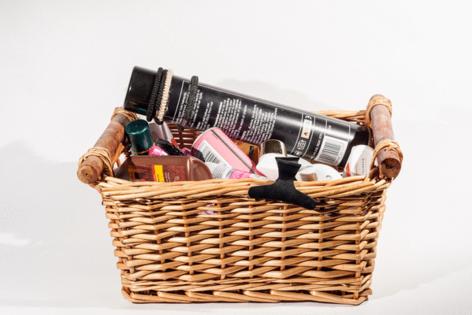Women's salaries are lower, and their expenses are higher. Here's how to push back
Published in Home and Consumer News
Anyone walking down the personal care aisle at a grocery or convenience store will see the distinction immediately.
Pink razors, shampoo, body wash and all the items that smell like flowers and boast ingredients like white tea and shea butter are for women. Blue products that evoke earthiness and sports without any flowery additives are for men. But the actual biggest difference is usually listed on the shelves themselves: price.
Women pay thousands of dollars more than men each year for necessary items, an expense known as the "pink tax." The disparity is particularly pronounced among consumer packaged goods: More than 80% of personal care products are gendered, according to a 2023 study that found "large price differences" between men's and women's grocery, convenience, drugstore and mass merchandiser products from the same manufacturer.
It's not just shampoo. From sweaters to haircuts to life annuities, women tend to pay more for products marketed to them. There are also costs associated with expectations around your gender presentation, especially in the workplace. Research shows people considered attractive earn about 20% more than their less-attractive peers, and for women, personal grooming accounts for 100% of the premium.
"When people talk about the pink tax, they're talking about that things cost more. But they don't talk about also that the expectations are completely different for women," said Nancy Dilts, a wardrobe consultant who serves clients throughout the Twin Cities. "The stakes are much higher for women."
Factor in the gender pay gap, which since the 1990s has meant a woman on average earns about 80 cents for every dollar a man does, and the odds against women's financial success are stacked. Take the roughly $2,000 a woman spends on being a woman in a year, invest it annually for 20 years, and you're looking at more than $100,000, said Ashley Feinstein Gerstley, founder of the feminist personal finance platform the Fiscal Femme. Add up the pay gap for all women, and you're looking at a $1.6 trillion hole in the U.S. economy every year.
Though there have been city, county and state crackdowns on gendered pricing, federal efforts have been unsuccessful.
"If you're questioning if it's real, it definitely is," said Aimee Hatlestad, an Edina-based wealth adviser. "But if you can accept it, you can overcome it."
Here's some advice on how to spend your green on pink without going in the red:
Conscious consuming
...continued
©2024 StarTribune. Visit at startribune.com. Distributed by Tribune Content Agency, LLC.







Comments